The absence of scales will never force you to give up culinary experiments if you know how many grams are in a faceted glass and have it at hand. Just do not forget that volume and weight are far from the same thing, so grams are not the same as milliliters. Without delay, let's figure out how many products can hold a glass.
Unforgotten veteran of the kitchen front
The convenience of a tea glass (this is the second "name" of a faceted glass) is that it has a classic volume - 200 ml, which cannot be said about its modern "relatives", which are distinguished by their original design and arbitrary capacity. Although a glass with edges was invented a long time ago (according to some sources, back in the time of Peter I), it did not go into oblivion. Open any recipe and you will see the usual measure - "1 tbsp." There is no need to specify anything else, everyone already understands well that we are talking about a standard 200-gram glass. He was, and remains the standard of the "kitchen" measure.
From milliliters to grams: the capacity of a faceted glass
Modern technologies, including home technologies, have gone far ahead. But why spend money on expensive electronic scales (which will run out of battery at the most inopportune moment), if you can measure any amount of liquid and bulk ingredients with the help of a tea glass with no less success and accuracy?
Read also:
- How many grams is 1 cup of sugar?
If we are talking about liquids (water, vinegar, wine), then a full glass is 200 ml (or 250 ml if it has a rim). But dry foods have different densities - it is more convenient to measure them in grams. Therefore, we find out how many grams are in a faceted glass. Let's start with the food components that are most often present in recipes.
For baking lovers: the subtleties of measuring flour
Let's talk about flour first. For many housewives, the number one question is how many grams of flour are in a faceted glass. There are tricks in how to measure it. Do not take directly from the package with a glass. This can lead to the formation of voids at the walls, which will reduce the amount of product. Do not make a slide, but do not compact the contents either.
If you begin to measure in this way, then exactly 130 g of flour will enter the faceted glass (if you have a large glass of 250 ml, then the product will be 160 g in it). If you first sift it, then the glass will hold only 125 g. Well, those who are used to tamping the powder will receive 210 g in such a vessel.
Everything seems to be clear, but the problem is that recipes usually indicate even portion flour (100 g). How to be? Pour a little less than half a glass into the eye? To be accurate, sprinkle the desired amount with tablespoons: 100 g is 4 tbsp. l. without top.
And one more note. If the flour is stored incorrectly, due to which it is damp or caked, then it will end up in a glass a little more than the indicated values.
Cooking for the sweet tooth: the amount of sugar in a glass
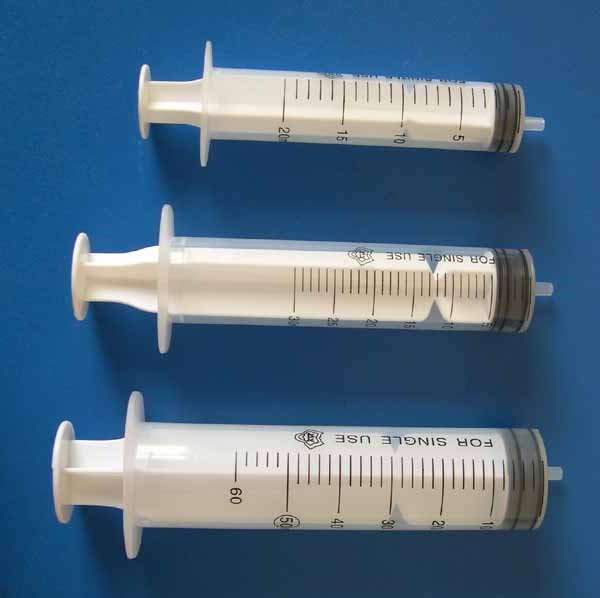
If we are talking about a container with a rim that holds 250 ml, then it is very easy to remember how many grams of sugar are in a faceted glass, since it will be an even amount - 200 g. Thus, if you need 100 g, then pour half of this measure. If the glass is 200 ml, then there will be 180 g of sand in it.
Often for the preparation of sweet delicacies it is necessary powdered sugar. Its quantity in 200 and 250 gram glasses will be as follows - 140 g, 190 g.
Proper food: measure cereal for porridge
Delicious and healthy meals, which must be present in the children's and adult menus - cereals. Of course, most housewives pour cereal, based on their personal experience. But for the “correct” porridge, accurate information will not hurt.
Perhaps it will be news to you how many grams of rice are in a faceted glass with a capacity of 250 and 200 ml. In the first case, the weight will be 230 g, in the second - 180 g. But how many other cereals will be in such a glass container:
- millet - 220; 200 g;
- buckwheat - 210; 165 g;
- semolina - 200; 160 g;
- barley - 230; 180 g;
- barley - 180; 145 g;
- oatmeal ("Hercules") - 70; 50 g;
- sago - 180; 160
If you want to treat yourself to jelly, then you should know that you can put 150 g of starch into a tea glass. And for those who decide to bake pies or buns with poppy seed filling, the following information may be useful: there will be 155 g of poppy seeds in a glass (if it is cutlery 250 ml) or 120 g (if you have a faceted “classic”).
Grams and liquids

As you already understood, with the help of a faceted glass, you can measure almost anything. And, although it is customary to measure liquid substances in milliliters, in cookbooks Grams come across. How many grams, for example, in a faceted glass of water? Everything is simple here: as much as milligrams - 200 or 250 (depending on the volume of the glass). This applies to juice, vinegar and milk.
As for other liquids having a greater or lesser density, their quantity in a glass of 250 and 200 ml is as follows:
- honey - 415; 330 g;
- sour cream, kefir - 250; 200 g;
- vegetable oil - 225; 180 g;
- melted margarine - 230; 180; oil - 240; 185 g;
- tomato paste - 220; 180
The difference of 50 milliliters is due to the fact that the glasses can be different. A standard glass, with an even rim located along the upper edge, filled to the top, holds ¼ liter (or 250 ml.). And another type of glass does not have such a border, and the capacity of such glasses is 200 ml. Therefore, depending on the number of milliliters indicated in the recipe, you can choose which glass will be easier for you to measure the liquid.
A glass holds 200 - 250 milliliters.
It is worth noting that for most recipes the statement is true: the more accurately you follow the norms indicated in the recipe, the tastier and more correct the dish will be cooked.
It is interesting!
On these pages you can find out:
How many milliliters in a teaspoon
How many milliliters in a tablespoon
How many grams in a tablespoon
How many grams in a glass
How many grams in a teaspoon
For example, the recipe yeast dough known to every housewife. Classic variant includes water, milk, yeast, as well as eggs, flour, vegetable oil and sugar. Moreover, water and milk should be put in one glass (250 ml). If you put less, the dough will be too rough, and if there is too much liquid, then the pies will be difficult to cut and they will not be as airy and tender.
By the way, if the recipe indicates the amount, for example, of water in grams, then you can remember that it fully corresponds to milliliters (200 milliliters of water \u003d 200 grams of water).
05 February 2017 1982
Each person at least once in his life faced a situation when it is necessary to measure a certain amount of a substance, for example, 200 ml of ordinary water. As it turns out, using the most common objects (spoons, cups, plates and even a syringe), you can easily do this.
So, 200 ml of water is how many grams? AT Everyday life scales are often used to measure mass. However, if we recall the school physics course, it turns out that weight and mass are different quantities. Weight is force and mass is quantity.
Weight is directly related to gravity. Volume units different substances have different masses. The exception is water. Its density (the ratio of mass and volume) is practically equal to 1. From this it follows that 1 ml of water contains 1 g and its 200 ml are equal to 200 g.
measuring with spoons
The easiest thing to measure required amount substances from those that are always at hand with any housewife, of course, is a spoon. Usually they use a tablespoon or a teaspoon, less often a dessert one. Let's find out, 200 ml of water is how many teaspoons and tablespoons.
Only 5 ml of water can be placed in one teaspoon. To determine the number of teaspoons contained in 200 ml, it is necessary to perform the simplest calculations: divide 200 by 5, you get the number 40. So, 200 ml hold 40 teaspoons.
When there is no teaspoon at hand, you can use the dining room. The use of such a spoon is most effective when measuring large volumes, since it is more than three times more capacious than a teaspoon.
One tablespoon holds 18 ml of water. After performing calculations similar to the first case, it turns out that 200 ml contain 11 full tablespoons and a little more - a little bit more.
If you need to use dessert spoon, then it should be noted that it holds 12 ml. So, to measure 200 ml, you need 16 and a half dessert spoons.
With a glass
Very often, an ordinary faceted glass is used to measure the amount of products. It is believed that the volume of water poured into a faceted glass to a smooth rim is 200 ml. It turns out that in order to measure 200 ml, you need to take one single glass.
dinner plate
The question arises, what to do when there is not a single spoon or even a glass nearby. In this case, you can use a regular dinner plate for soup. In order to determine the number of soup bowls that hold 200 ml of water, you need to know the volume of one such bowl.
Most often, a soup dish contains 500 ml of water. So, to get 200 ml, you need to take a little less than half a bowl of soup.
Application of tea mug
Sometimes a tea mug is used to measure the liquid. Often such a mug holds 300 ml of water. Remembering mathematics and applying the properties of proportion, we can easily calculate that 200 ml is two-thirds of a tea mug. So this item is not very convenient for measuring the volume of 200 ml, as well as 400 ml, 800 ml and so on.
Using a medical syringe
 Popular enough and easy to use when measuring liquid products, and especially water, is an ordinary medical syringe. Ease of use lies in the fact that each syringe is marked with the number of milliliters that can fit.
Popular enough and easy to use when measuring liquid products, and especially water, is an ordinary medical syringe. Ease of use lies in the fact that each syringe is marked with the number of milliliters that can fit.
In this regard, it is not possible to give an exact answer to the question about the number of syringes needed to transfuse 200 ml without knowing the capacity of the syringe itself.
In each case, you can independently make simple mathematical calculations. To do this, 200 ml must be divided by the volume of one syringe indicated on it.
Improvised means for measuring
If you do not have any of the above, then you can use a regular glass bottle of beer or lemonade with a volume of 0.5 liters or a half-liter jar. To obtain 200 ml, you need to take less than half of the listed vessels.
Conclusion
Summing up the above, we can say that measuring 200 milliliters of water at home without the use of special measuring instruments is quite simple.
Every housewife will always have at hand some handy tool. However, it is worth remembering that the listed norms are applicable mainly only for water, for other liquids that have a density other than unity, it is necessary to make more detailed calculations.
Almost every woman who “conjures” in her kitchen is faced with the problem of determining the weight of certain ingredients for her dishes. Most often, it is necessary to determine - how many grams of flour in a faceted glass? The answer to this question is very important, because it allows you to quickly measure the required amount of flour for cooking specific dishes and confectionery, without weighing on the scales. Let's dwell on this issue in more detail.
Faceted glass is most often chosen as a "measure of weight" most likely by tradition. This glass vessel is still in Soviet times became an obligatory attribute of domestic public catering. An unobtrusive domestic service offered tea in faceted glasses in the "embrace" of a decoratively designed coaster on trains and planes, in canteens and restaurants. This item was present in every kitchen, and it is not surprising that it faceted glass became the standard for determining the weight or volume of various products.
![]()
So, how many grams of flour are in a faceted glass?
Let's define it in a practical way. In the most common, 250-ml glass with a "side", we fall asleep wheat flour to the edges of the glass, carefully remove the excess with a knife. Then pour all the flour from the glass onto the scales. We get 150 - 160 grams of flour. This weight is given in a certain range, because flour is different, both in its composition and grain origin, and in the quality of grinding. In addition, the flour can cake and compact, then its weight in the glass will increase slightly.
Weights different varieties flour in the volume of a 250-ml faceted glass:
Wheat flour 160 grams;
- potato flour 180 grams;
- corn flour 160 grams;
- whole wheat flour 130 grams;
- buckwheat flour 175 grams;
- rye flour 160 grams.
Ever since Soviet times, in almost every house or apartment, the legend of measuring devices has been preserved - a faceted glass. The famous sculptor of the USSR, the creator of the epic monument "Worker and Collective Farm Woman" - Vera Mukhina in 1943 developed the design of a "mini-masterpiece" - a faceted glass. The number of faces in it was even, varied from 10 to 20. At the same time, the capacity remained unchanged. Traditionally measuring bulk materials and liquids with teaspoons and tablespoons, our mothers and grandmothers knew exactly how many milliliters are in a glass. He was kept like the apple of his eye, because he was the most convenient and accurate measuring tool.
Leap from history to modernity
In recipes for many dishes, there are still volumes of measured liquid, expressed precisely in glasses. Despite the wide variety of different types this unique container in glassware stores, it is always a faceted standard glass made of transparent glass. If this invention of the last century is no longer used in everyday life, then it is often kept in the house as a standard in order to know exactly how many milliliters are in a glass. As a measuring tool, it will help to determine the volume of the required liquid ingredients of dishes with the greatest accuracy.
Faceted glass and volume of liquid
The simplest and most accessible method for measuring the volume of a vessel is considered to be manipulations with water. Its relatively low density makes it easy to find out how many milliliters are in a glass of water. The resulting values will indicate not only the volume of water, but also its weight. As is known from the school curriculum: the mass of 1 ml of water is 1 gram and occupies 1 cubic meter. see volume. In the first-aid kit, any housewife will always have a regular syringe - 5, 10 or 20 cubic meters. see. Pour into a glass of 200 ml to the rim (or in other words, “risks”, “belt”) using any of these medical injection tools. Twenty cc syringes with water will need 10 pieces of 10 cc - 20 pieces, 5 cc syringes will have to be manipulated carefully, since water will need to be poured out of them 40 times.
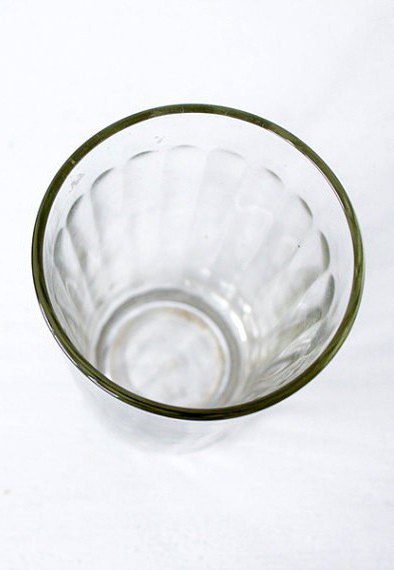
Two hundred milliliters - the classic volume of a faceted glass to the "risks". Having added 50 ml above the girdle to the fullness of the container with water, you can find out how many milliliters are in a faceted glass, poured to the top - 250 ml. In most recipes, if the number of milliliters in a glass is not indicated, the average amount of liquid is meant - 200 ml. This volume is easy to measure 400, 600 ml of liquid without getting your hands dirty.
Faceted glass without "belt"
Not always at hand is a classic faceted glass with a rim. The Soviet industry also produced other glasses that did not have a rim. How many milliliters are in a glass without a rim on the top? Their maximum capacity is all the same cherished 200 ml.
Thin glass - is it suitable for measurements?
If the “Malenkovsky” faceted masterpiece of the middle of the last century is not available at home, then you can use the usual thin glass. 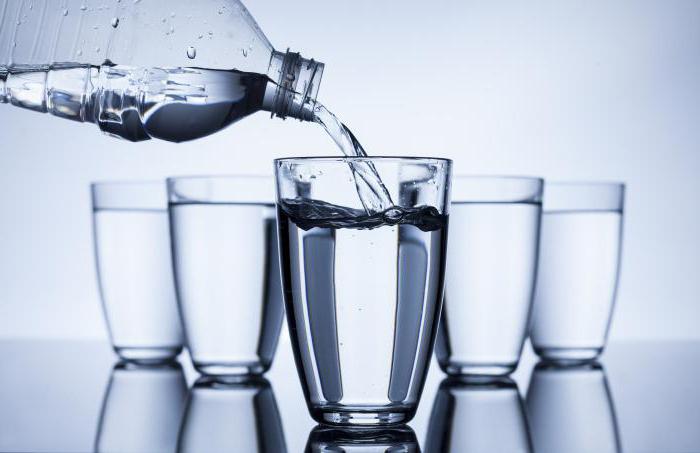 How many milliliters in a glass modern manufacturers utensils? Total volume thin glass without edges, poured to the top - 200 ml.
How many milliliters in a glass modern manufacturers utensils? Total volume thin glass without edges, poured to the top - 200 ml.
Glasses without rim
Small glasses with figured edges, with diamond-shaped and other glass inlays, when filled to the top, have a capacity of 200 ml. Despite the different weight of the vessels themselves, they are filled to the rim with the same volume of liquid. A thick glass with a lower border does not differ from its counterparts in capacity - it is also filled with 200 ml of water.
How do you calculate the volumes of the parts of a familiar vessel?
For a faceted glass with a volume of 250 ml, the maximum amount of liquid that can be held is 240 ml. 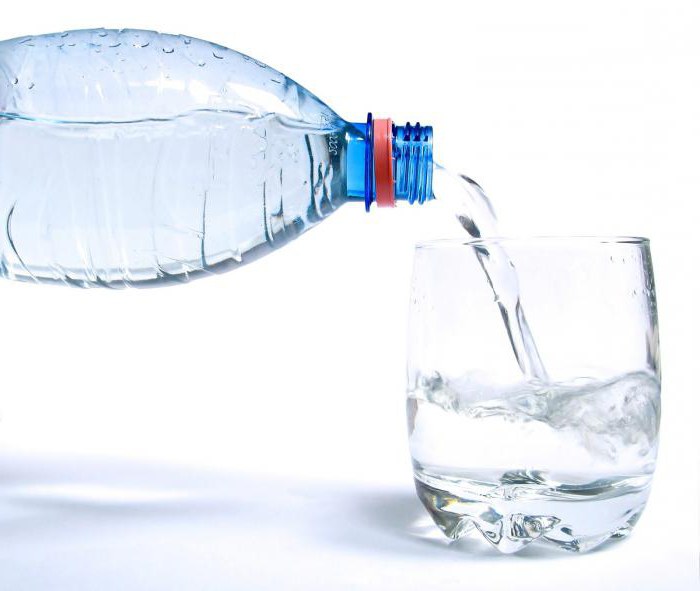 Therefore, it is easy to calculate how many milliliters in ¾ cup - 180 ml, in 2/3 - 160 ml, in 0.5 cup - 120 ml, in 1/3 - 80 ml, and in ¼ - 60 ml.
Therefore, it is easy to calculate how many milliliters in ¾ cup - 180 ml, in 2/3 - 160 ml, in 0.5 cup - 120 ml, in 1/3 - 80 ml, and in ¼ - 60 ml.
What about milk?
All liquids that are close to water in density occupy the same volume as the original value. When asking how many milliliters of milk are in a glass, they usually mean whole milk. 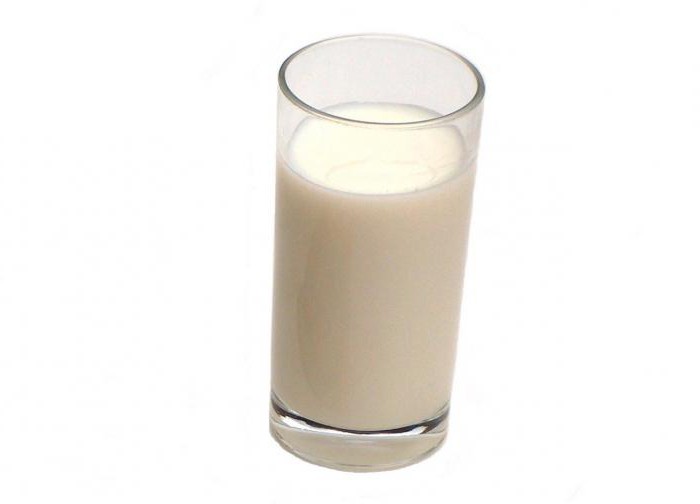 The volume of this product in a faceted glass will correspond to 200 ml to the risks and 250 ml if the vessel is filled to the top. Condensed milk will take 200 ml, but weigh - 360 gr. Powdered milk(as a bulk product) on the scales will show 100 g.
The volume of this product in a faceted glass will correspond to 200 ml to the risks and 250 ml if the vessel is filled to the top. Condensed milk will take 200 ml, but weigh - 360 gr. Powdered milk(as a bulk product) on the scales will show 100 g.
Recipes and 50 ml difference
In some recipes, the amount of liquid can be interpreted freely, regardless of which glass the hostess uses, with a volume of 200 or 250 ml. But the manual for the preparation of yeast dough does not forgive such free-thinking. If it says “one glass of water and milk each”, then you need to pour 250 ml of liquids. A smaller amount will lead to coarsening of the dough, and a larger amount will spoil its structure, there will be difficulties with cutting, and the pies will lose their airiness.
America and England...
Experimenting in the kitchen with various recipes foreign culinary specialists, it is necessary to take into account that in national dishes the unit of measure is a cup. Moreover, in England and the USA these standards are different. In America, the standard cup is 250 ml, while in the UK it is 280 ml. Americans consider half a cup as 125 ml, but a quarter of the capacity is 60 ml. Two-thirds of a cup in America corresponds to 170 ml, and three-fourths of a vessel corresponds to 190 ml.


